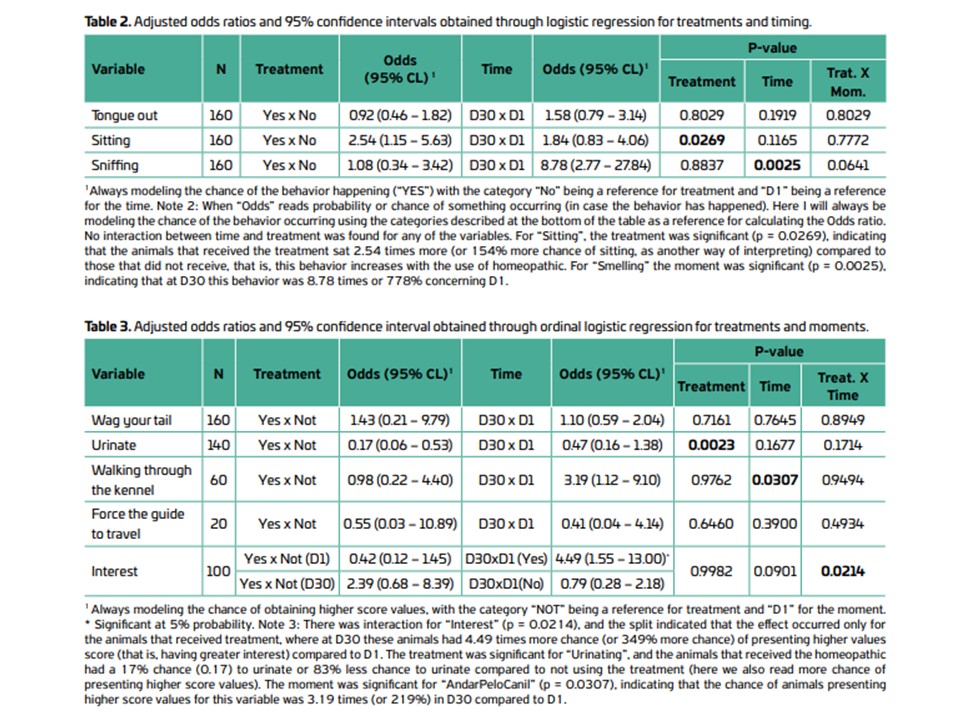Is the addition of spray homeopathic in feed able to change dog behavior?
DOI:
https://doi.org/10.21708/avb.2022.16.3.10508Abstract
This study aimed to determine if the homeopathic formulation based on Natrum muriaticum, Matricaria, Chamomilla, and Ignatia amara was effective for stress control in dogs in order to prevent and/or reduce the frequency of unwanted behaviors. Ten male beagle dogs were divided into two groups, with five animals per group. The control group was animals receiving 0.5 mL/day of placebo via spray in the feed for 30 consecutive days as a preventive. The treated group received 0.5 mL/day of tested drug spray in the feed for 30 consecutive days as a preventive. Behavioral tests were performed at two time points, before and after receiving the tested drug. We performed the following behavioral tests: a) persons known and unknown in the internal and external environment; b) interaction with toys; c) interaction with an unknown dog, d) test with a leash; and e) firecracker test. There was more engagement in digging and scaling the fence in the control group than in the treatment group (P < 0.05). The animals that received homeopathic medicine sat 2.54 times longer than the control (P = 0.0269). Dogs that received homeopathic showed 4.49 times more interest in general at D30 than at D1 (P = 0.0214). Animals in the treated group showed an 83% less chance of urinating than the control group in the tests involving displacements. We conclude that the preventive addition of homeopathic medicine containing Natrum muriaticum, Chamomilla, and Ignatia amara reduced undesirable behaviors related to anxiety and increased the incidence of interest behavior.
Downloads

Downloads
Published
Issue
Section
License
Copyright (c) 2022 Acta Veterinaria Brasilica

This work is licensed under a Creative Commons Attribution 4.0 International License.
Autores que publicam na Acta Veterinaria Brasilica concordam com os seguintes termos: a) Autores mantém os direitos autorais e concedem à revista o direito de primeira publicação, com o trabalho simultaneamente licenciado sob a Licença Creative Commons Attribution que permite o compartilhamento do trabalho com reconhecimento da autoria e publicação inicial nesta revista. b) Autores têm autorização para assumir contratos adicionais separadamente, para distribuição não-exclusiva da versão do trabalho publicada nesta revista (ex.: publicar em repositório institucional ou como capítulo de livro), com reconhecimento de autoria e publicação inicial nesta revista. c) Autores têm permissão e são estimulados a publicar e distribuir seu trabalho online (ex.: em repositórios institucionais ou na sua página pessoal) a qualquer ponto antes ou durante o processo editorial, já que isso pode gerar alterações produtivas, bem como aumentar o impacto e a citação do trabalho publicado (Veja O Efeito do Acesso Livre).


 Esta obra está licenciada com uma Licença
Esta obra está licenciada com uma Licença 